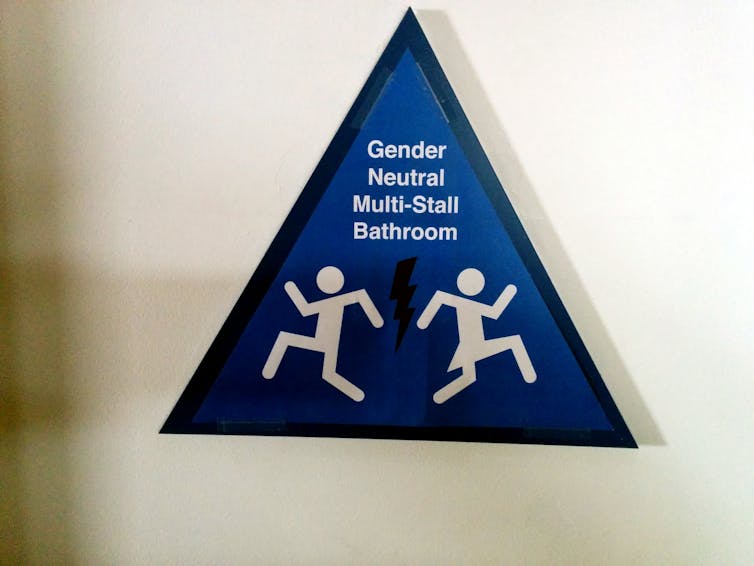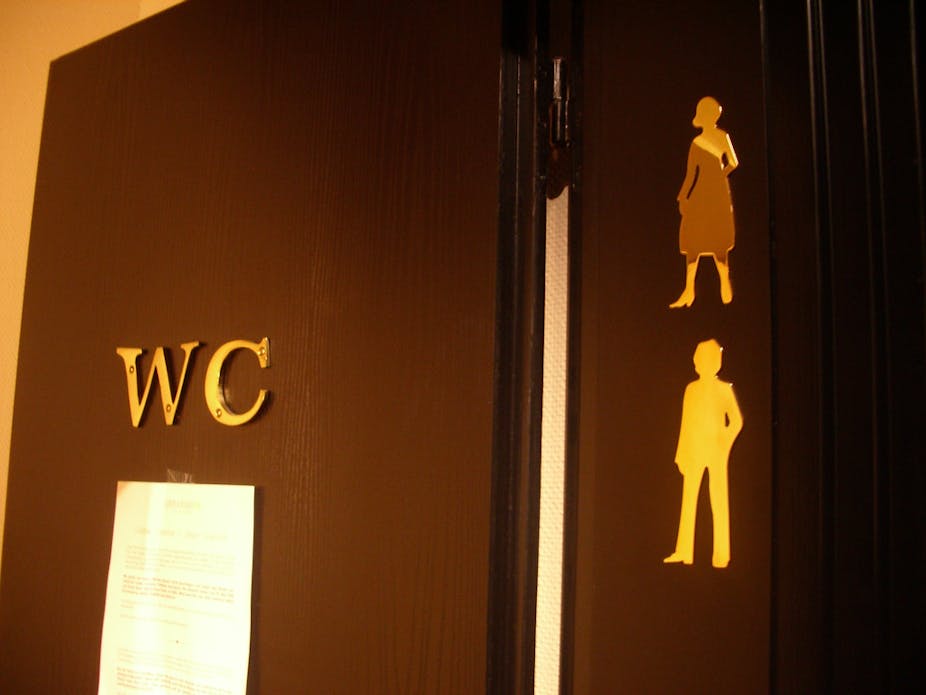Last week North Carolina became the first state to pass a law requiring transgender individuals (including students) to use only bathrooms that match their biological (rather than identified) gender. They did so in response to an ordinance passed in Charlotte that supported transgender bathroom choice.
Transgender students’ access to bathrooms is an increasingly active front for LGBTQ rights battles. Recent calls for safer bathrooms have inspired “shit-ins” at California Polytechnic and San Diego State, where transgender advocates asked student allies to use only gender-neutral restrooms. In April last year, “urine” blockades confronted Berkeley students at Sather Gate, the main entrance to campus. Advocates filled plastic cups with fake urine and lined them up to greet students as they crossed the threshold into campus to protest inadequate restrooms for transgender students.
To a degree, these strategies have been effective. Courts, campuses and communities across the country have supported calls for transgender bathroom safety.
But in many cases, these efforts have launched a visceral backlash – now with North Carolina at its helm. It took state legislators only 12 hours to initiate, discuss and sign into law its prohibitions.
Why is bathroom safety so essential for transgendered individuals? And why is it greeted with such hostility?
Issues of physical, emotional safety
Studies show that transgender students can be harassed, sexually assaulted or subjected to other physical violence when they are required to use a gendered bathroom.
One survey, commissioned by the Williams Institute, a think tank at UCLA, found that 68 percent of participants were subjected to homophobic slurs while trying to use the bathroom. Nine percent confronted physical violence.

Seventy percent of transgender individuals surveyed in Washington, D.C. experienced verbal or physical assaults or were otherwise threatened when attempting to use the bathroom of their choice. Some experienced more than one form of such behavior.
Yet another survey found that 26 percent of transgender students in New York were denied access to their preferred bathrooms altogether.
As a result, transgender students need to constantly weigh the trade-offs as they consider bathroom options.
As one University of Washington student articulates:
Do I choose physical safety or emotional safety? Do I choose physical health or mental health?
Bathroom policies
For some policymakers, these facts are compelling. For example, University of Pittsburgh, Arizona State University and the University of Maine, among several others, have established policies that would permit transgender students to use the bathroom of their choice.
K-12 settings too are making similar accommodations. For instance, California’s School Success and Opportunity Act requires that all K-12 students be able to access bathrooms or locker rooms that are consistent with their own gender identity.
The private sector is responding as well. Hours after North Carolina passed its bill, the National Basketball Association (NBA) and other high-profile organizations expressed their opposition. A Kroger grocery store in Georgia has gone one step beyond opposition and relabeled its bathrooms as gender-neutral.
Bathroom panic
But “bathroom panic” appears to be the new focus in the story of gay rights backlash.
Wisconsin is considering legislation that would impose significant burdens on schools attempting to support transgender bathroom safety. And in South Dakota, a bill that would have restricted transgender students’ use of restrooms, locker rooms and other gender-specific facilities was recently vetoed.
Incidents of backlash have surfaced in elementary schools as well. For example, an elementary school student in Stafford County, Virginia, was prohibited from using a bathroom associated with her gender identity after parents and politicians in the state spoke out against the student’s request.
Federal intervention too has sent out mixed signals. On the one hand, the Department of Education issued a letter to an Illinois school district stating that denying a transgender student’s rights to access a bathroom consistent with their gender identity is a violation of Title IX.
On the other hand, a federal court rejected a transgender student’s claim that his equal rights were violated when his university rejected his request to use a locker room that matched his gender identity.
Is it only about women’s safety?
So, why is there is there so much backlash against these moves to provide safe bathrooms?
Opponents say that they are concerned about the possibility of men using “women’s showers, locker rooms and bathrooms” or “sex offenders…follow[ing] women or young girls into the bathroom.” But these explanations are problematic.
Bathroom opposition tends to affect far more than just bathrooms. In many cases, so-called “bathroom bills” create obstacles for all LGBTQ individuals in a variety of different settings.
In Houston, voters threw out an entire ordinance outlawing LGBTQ discrimination (an ordinance that is now standard in over 200 cities and counties) because it would provide bathroom choice to transgender individuals. Similarly, North Carolina’s “bathroom bill” (HB2) prohibits all municipalities from passing any ordinance that protects LGBTQ individuals from discrimination.
These strategies suggest that something more than just concern for women’s safety is at play.

Furthermore, this opposition exists even when transgender advocates invoke the needs of students with disabilities, those who may need “family bathrooms” and students who have survived sexual abuse and are more comfortable with single-stall facilities.
Need for safety
At this point, for many transgender students, bathroom options are limited.
Either they have to travel quite a distance to get to the nearest single-stall gender-neutral bathroom, or change in an “alternative” locker room (often a faculty bathroom or custodial closet).
There could even be days when they go to class in their workout clothes or “hold it in.”
Such options have clear drawbacks and health risks. Urinary tract infections, depression and even suicide could be among them.
As a result, sometimes students see their best option as renting a house near campus so they can go home to use the bathroom.
One student in North Carolina has decided to fight HB2 – by using the letter of law. To anyone who might meet him, Charlie Comero is a man. But because his birth certificate lists him as female, Charlie must now use the women’s bathroom. To offset any confusion about his presence in the women’s bathroom, Charlie passes out cards with the following text.
I’m following a law that was passed on March 23. I am a transgender man who would rather be using the men’s room right now. This is likely uncomfortable for both of us. Please contact your legislature and tell them you oppose HB2.
To be sure, lawsuits have been filed and protests have ensued. But for now in North Carolina and elsewhere, transgender individuals (who are far more likely to be victims rather than perpetrators of assault) will be forced to fend for themselves.

